
The
largest living lemur, the large-bodied Indri (Indri indri) of
Magagascar's rainforest, faces imminent extinction, according to the latest
global assessment of at-risk species by the IUCN: photo by Nick Garbutt/PA via the Guardian, 23 June 2014
Wislawa Szymborska: Consolation
Darwin.
They say he read novels to relax,
But only certain kinds:
nothing that ended unhappily.
If anything like that turned up,
enraged, he flung the book into the fire.
True or not,
I’m ready to believe it.
Scanning in his mind so many times and places,
he’d had enough of dying species,
the triumphs of the strong over the weak,
the endless struggles to survive,
all doomed sooner or later.
He’d earned the right to happy endings,
at least in fiction
with its diminutions.
Hence the indispensable
silver lining,
the lovers reunited, the families reconciled,
the doubts dispelled, fidelity rewarded,
fortunes regained, treasures uncovered,
stiff-necked neighbors mending their ways,
good names restored, greed daunted,
old maids married off to worthy parsons,
troublemakers banished to other hemispheres,
forgers of documents tossed down the stairs,
seducers scurrying to the altar,
orphans sheltered, widows comforted,
pride humbled, wounds healed over,
prodigal sons summoned home,
cups of sorrow thrown into the ocean,
hankies drenched with tears of reconciliation,
general merriment and celebration,
and the dog Fido,
gone astray in the first chapter,
turns up barking gladly
in the last.
Wislawa Szymborska (1923-2012): Consolation, translated by Clare Cavanagh, 2006, from Map: Collected and Last Poems, 2015
Lemur lost -- last redoubt
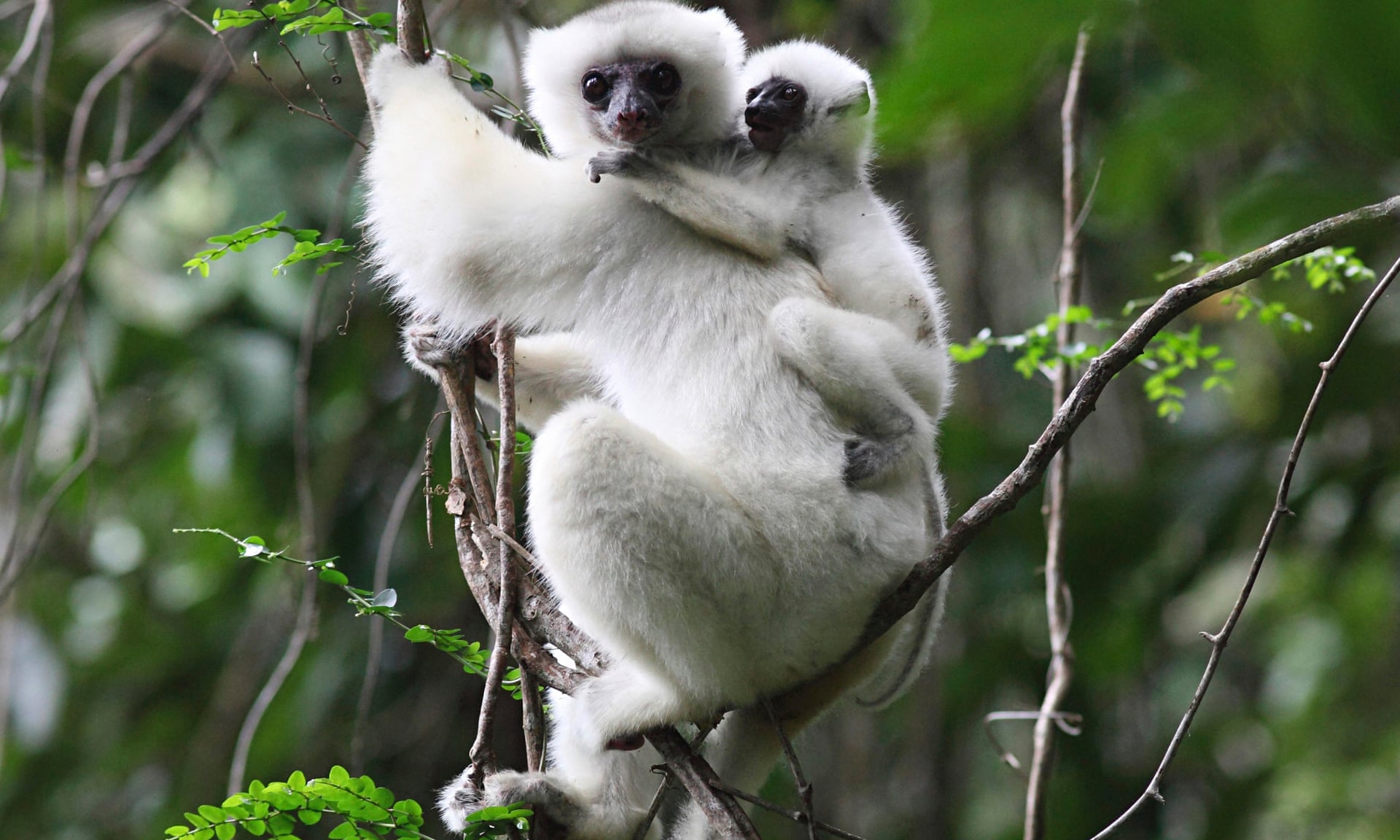
Silky sifakas, snow-white, metre-high lemurs that are among the world's most endangered creatures, perch in a treetop in Marojejy national park, Madagascar. Ongoing deforestation is a grave threat to this rare and fabled species; in recent years, gangs have run rampant in the rainforests, feeding demand for tropical hardwoods in China.: photo by Alamy via The Guardian, 21 February 2014
Diademed Sifaka (Propithecus diadema), sitting, Mantadia National Park, Madagascar: photo by C. Michael Hogan, 2006
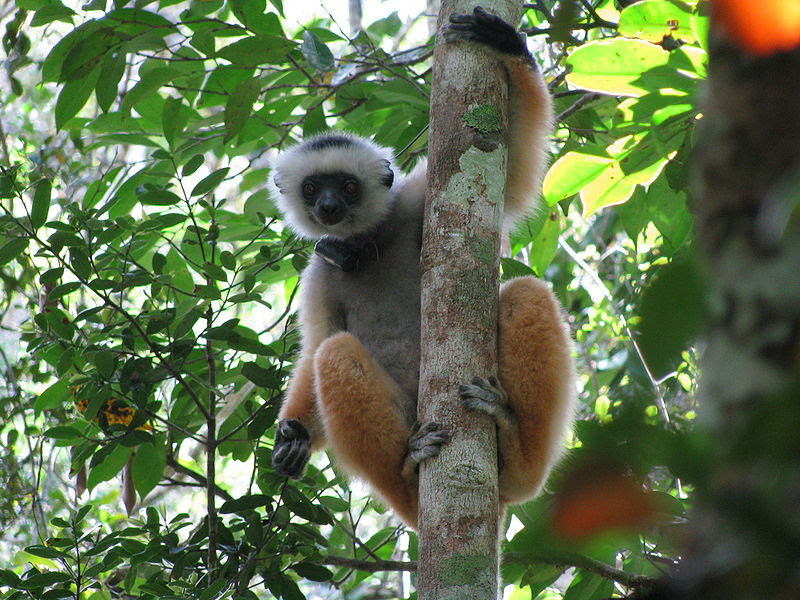
Diademed Sifaka (Propithecus diadema), with radio collar, Andaside-Mantadia National Park, Madagascar: photo by Karen Coppock, 2007
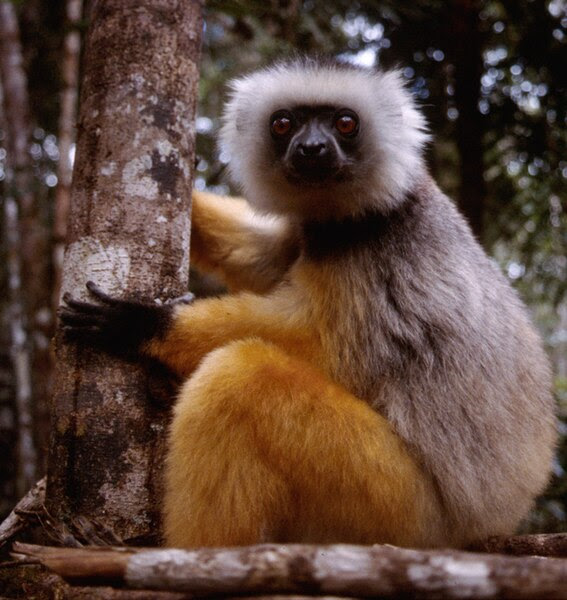
Diademed Sifaka (Propithecus diadema): photo by Tom Junek, 2003
Diademed Sifaka (Propithecus diadema): photo by Tom Junek, 2003

A rare baby diademed sifaka lemur peaks out from its mother’s lap, almost hidden in the canopy of a lowland rainforest of Madagascar, the only island where lemurs can be found. They are critically endangered due to habitat destruction and hunting: photo by Hery Randriahaingo / Aspinall Foundation via The Guardian, 21 October 2014
"… Madagascar tells us which rules would still hold
true if time had once broken its banks and flowed to the present down a
different channel …"
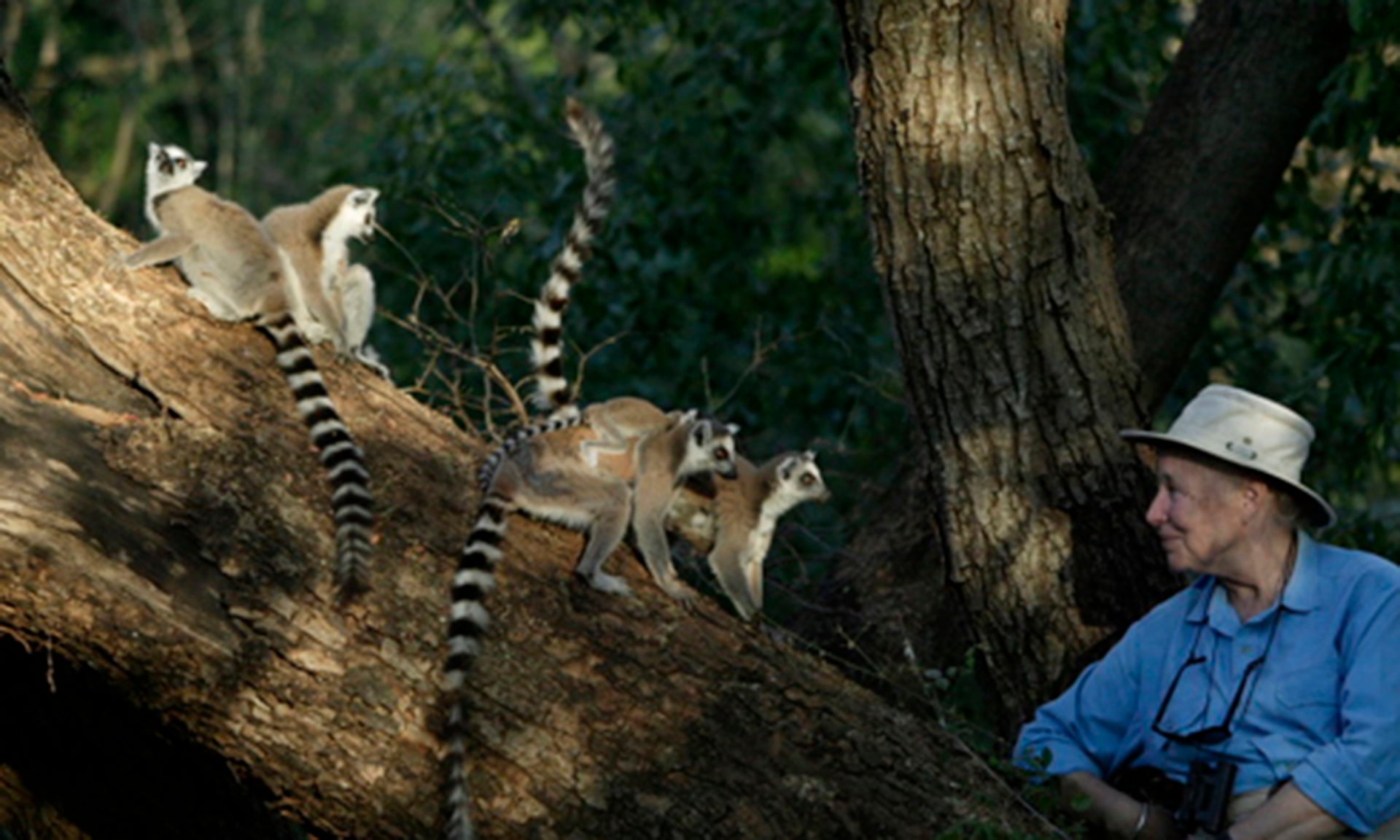
Alison Jolly's in-depth field research on the behaviour and ecology of lemurs in Madagascar helped to transform our understanding of the evolution of social behaviour: photo by Cyril Ruoso via the Guardian, 19 February 2014
"… Madagascar tells us which rules would still hold true if time had once broken its banks and flowed to the present down a different channel …"
-- Alison Jolly (1937-2014), from A World Like Our Own: Man and Nature in Madagascar (1980)
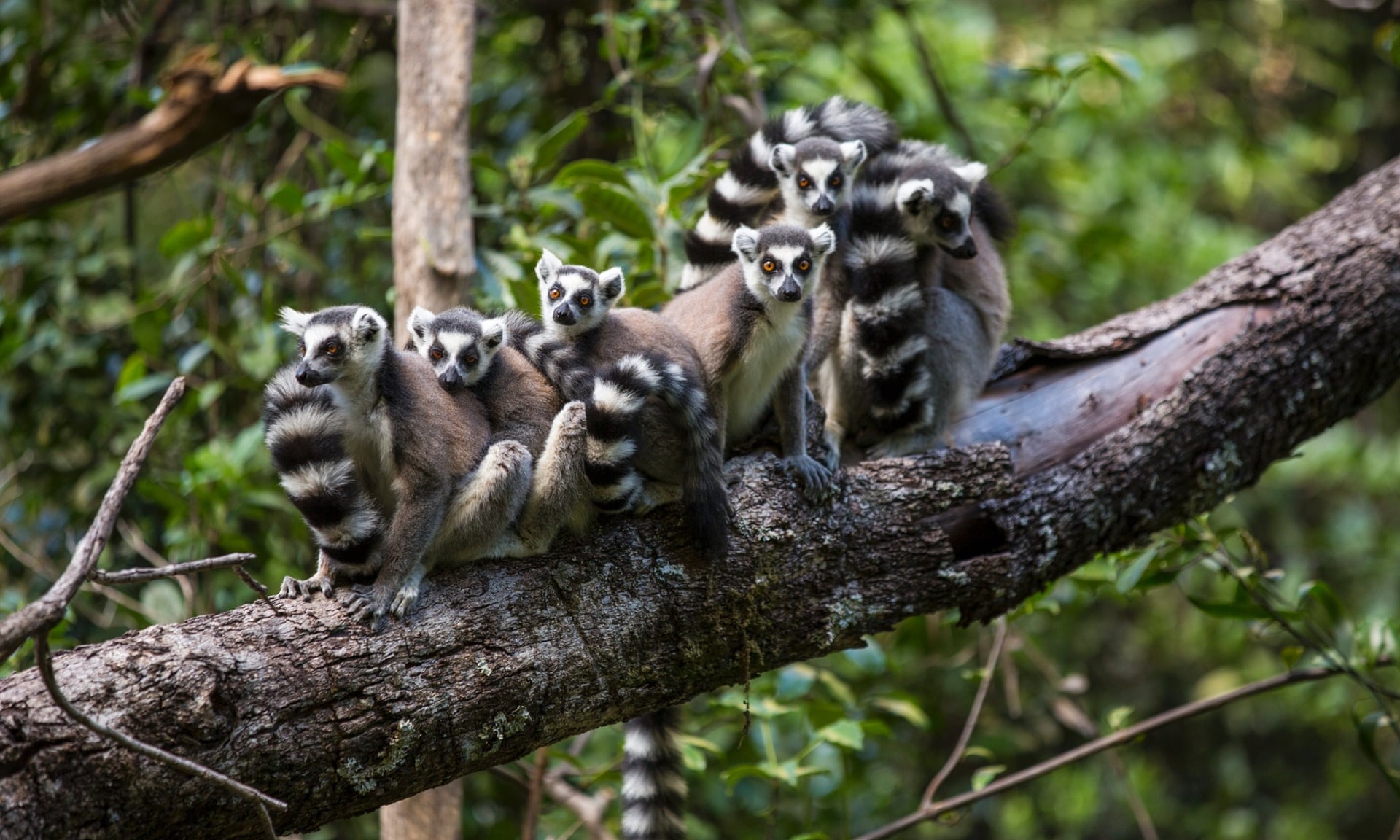
Ring-tailed Lemurs (Lemur catta) in Isalo national park, Madagascar: photo by Paul Souders/Corbis via The Guardian, 27 January 2015
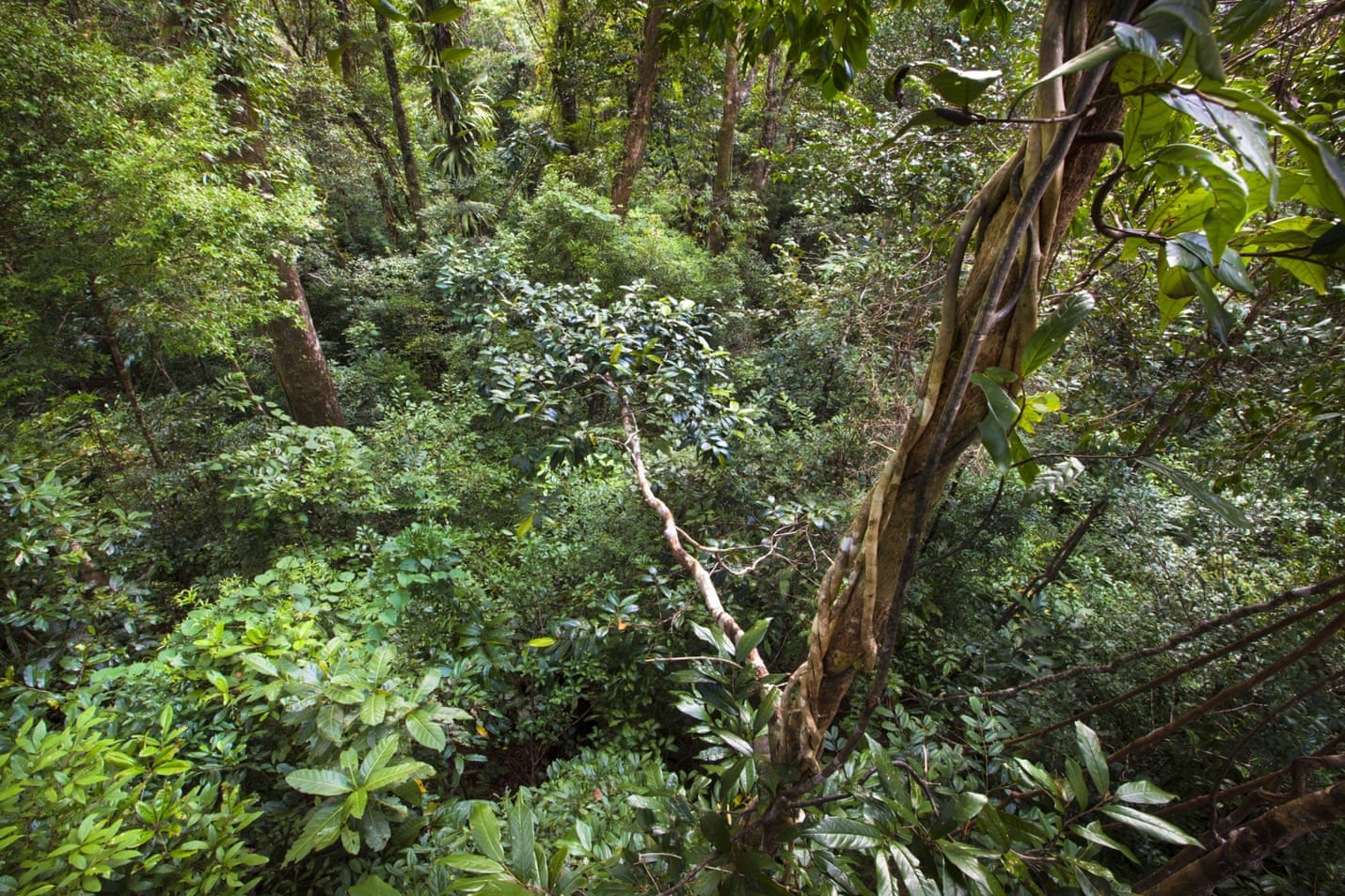
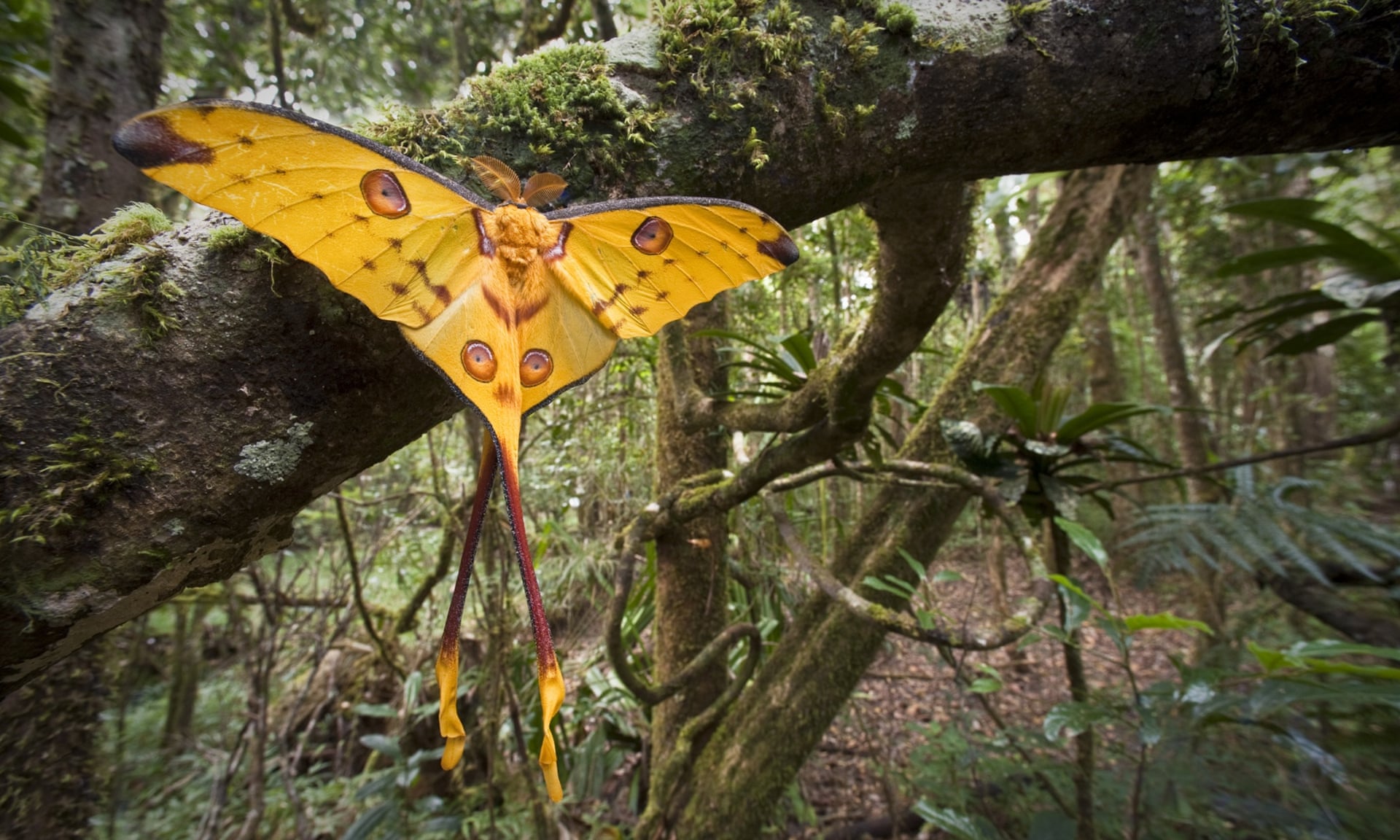
A Comet moth or Madagascar moon moth (Argema mittrei), recently emerged and drying its wings in Andasibe-Mantadia national park, Madagascar: photo by Nick Garbutt/Corbis via The Guardian, 27 January 2015
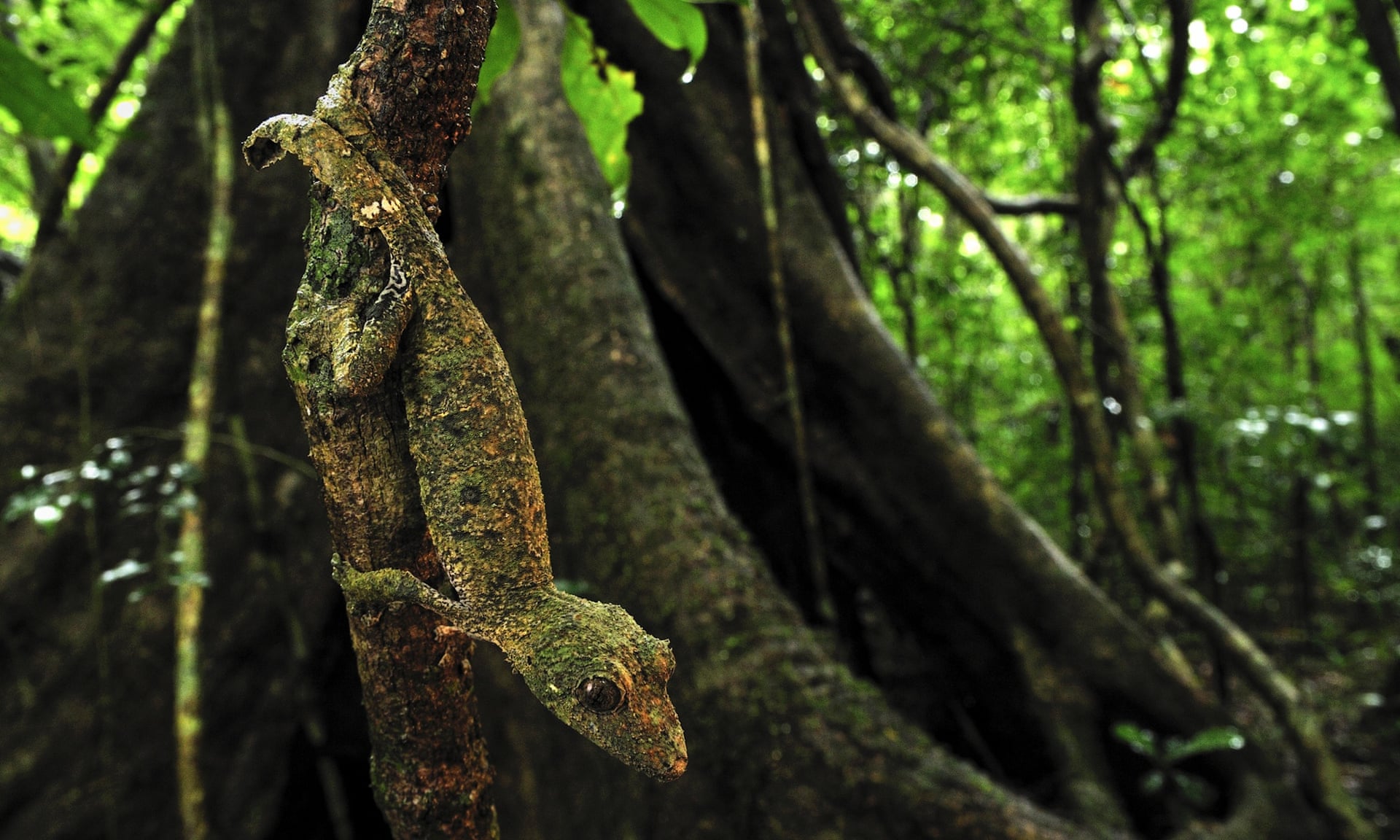
A leaf-tailed Gecko (Uroplatus sikorae) in Montagne D’Ambre national park, Madagascar. Many of the country’s species, such as this, are found nowhere else: photo by Thomas Marent/Corbis via The Guardian, 27 January 2015

An illegal logger fells a 300-400-year-old rosewood trees in Madagascar's Masoala national park, a Unesco world heritage site: photo by Pascal Maitre/Cosmos/eyevine via The Guardian, 23 December 2015

Madagascar’s ‘otherworldly’ rainforest, Masoala Peninsula national park, north east Madagascar: photo by Alex Hyde/Corbis via The Guardian, 27 January 2015

A Comet moth or Madagascar moon moth (Argema mittrei), recently emerged and drying its wings in Andasibe-Mantadia national park, Madagascar: photo by Nick Garbutt/Corbis via The Guardian, 27 January 2015


An illegal logger fells a 300-400-year-old rosewood trees in Madagascar's Masoala national park, a Unesco world heritage site: photo by Pascal Maitre/Cosmos/eyevine via The Guardian, 23 December 2015
Lemur lost
Two female blue-eyed black lemur, Madagascar. The male is black, the female a reddish brown colour. Lemurs are the only primate species other than humans that have blue eyes. They are the most endangered primate species in the world, owing to the destruction of their tropical forest habitat: photo by Frans Lanting/Alamy via The Guardian, 15 August 2013
More than 90% of lemurs face extinction, IUCN warns: Updated
'red list' describes the primates as one of the most threatened groups
of animals on Earth: Jessica Aldred, The Guardian, 11 June 2014
More than 90% of lemurs are facing extinction, according to the
latest update to the International Union for the Conservation of Nature’s (IUCN) “red list”, a global assessment of the world’s most threatened species.
Ring-tailed Lemurs (Lemur catta), travelling in a small group, Berenty Private Reserve, Madagascar: photo by Alex Dunkel, 2003
With 90 species of lemur now classed as being at risk of extinction
(91%), the primates are one of the most threatened groups of animals on
Earth. Of the 99 known species -– which live only on the island of
Madagascar off the coast of east Africa –- 22 are critically endangered,
including the largest living lemur, the large-bodied Indri (Indri indri). Almost half (48 species) are endangered, including the world’s smallest primate, Madame Berthe’s mouse lemur (Microcebus berthae). Twenty lemurs were listed as vulnerable to extinction.
Ring-tailed Lemur (Lemur catta), Berenty Private Reserve, Madagascar: photo by Alex Dunkel, 2003
Lemurs are threatened by the destruction of their tropical forest
habitat in Madagascar, where political instability and rising levels of
poverty in the past 20 years have accelerated illegal logging. As much
as 90% of the original natural vegetation on the island has been
destroyed and what remains is severely fragmented. Lemurs –- members of
the primate family –- are also being hunted for food.
Ring-tailed Lemurs (Lemur catta), travelling in a small group, Berenty Private Reserve, Madagascar: photo by Alex Dunkel, 2003
Ring-tailed Lemur (Lemur catta), Berenty Private Reserve, Madagascar: photo by Alex Dunkel, 2003

Shandong, China. Lemurs eat at Qingdao Forest Wildlife World in Qingdao: photo by China Daily/Reuters via The Guardian, 27 January 2015
A plague of ills -- sorrow beyond consolation?
Quand trafic et délinquance saccagent la nature. Episode 1, le bois de
rose #Madagascar: image via Aurélie @prune_1, 26 January 2015

Donc la semaine dernière 2 bateaux de bois de rose #Madagascar Min Tai Leng arraisonné vide Min Feng parti chargé: image via Kasahy Mahitsy @KasahyMahitsy, 27 January 2015

Donc la semaine dernière 2 bateaux de bois de rose #Madagascar Min Tai Leng arraisonné vide
Min Feng parti chargé: image via Kasahy Mahitsy @KasahyMahitsy, 27 January 2015
Quel est votre avis sur ce trafic de Bolabola ? Quelles mesures mettre en place ? #Madagascar: image via Le Monde Afrique @LeMonde Afrique, 27 January 2015
#Madagascar could lose battle against locusts if funds don’t come, UN warns: image via Plague.io Trends @Plaguelizer, 27 January 2015
A powerful image showing the realities of Madagascar's locust swarm..... #Madagascar: image via Azafady @azafady, 29 January 2015
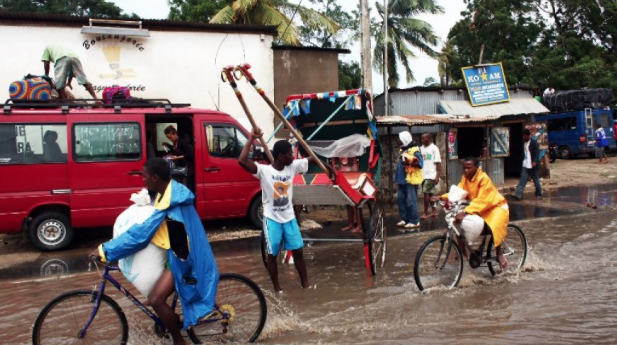
#Madagascar: journée de deuil après la tempête Chedza : image via Afrikatv @afrikatvnet, 27 January 2015
WHO chief warns of 'alarming' plague outbreak in #Madagascar: image via Plague.io Trends @Plaguelizer, 26 January 2015
Men work on a brick kiln in #Madagascar. Mainly fueled by burning wood, this is a very inefficient use of forest resources. Brick kilns also emit #carbons and other toxic fumes into the atmosphere, impacting our #environment and climate. #climatechange…: image via Ed Kashi @edkashi, 31 January 2015
Pourquoi on se préoccupe si peu de l'incroyable biodiversité de #Madagascar: image via WCS Madagascar @WCS_Mada, 27 January 2015
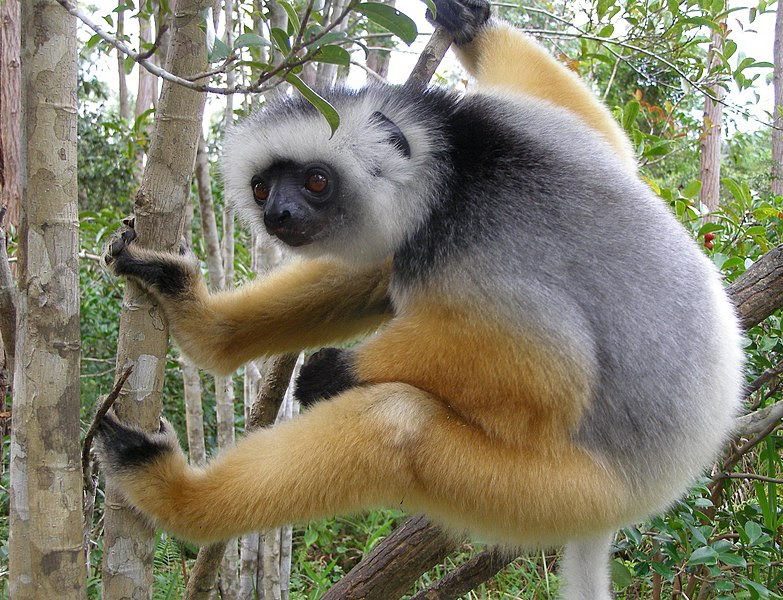
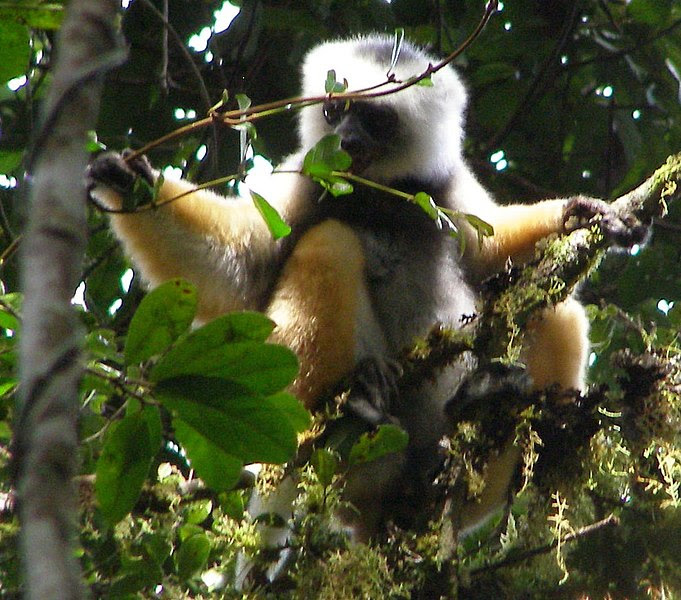
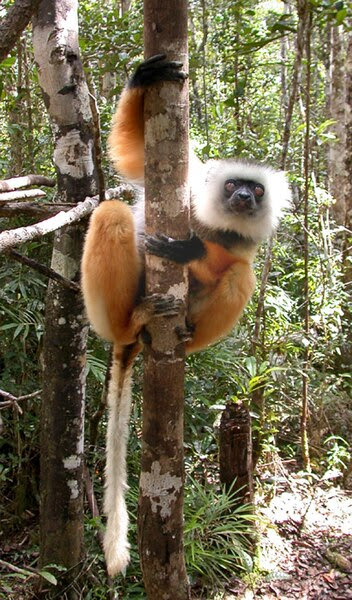
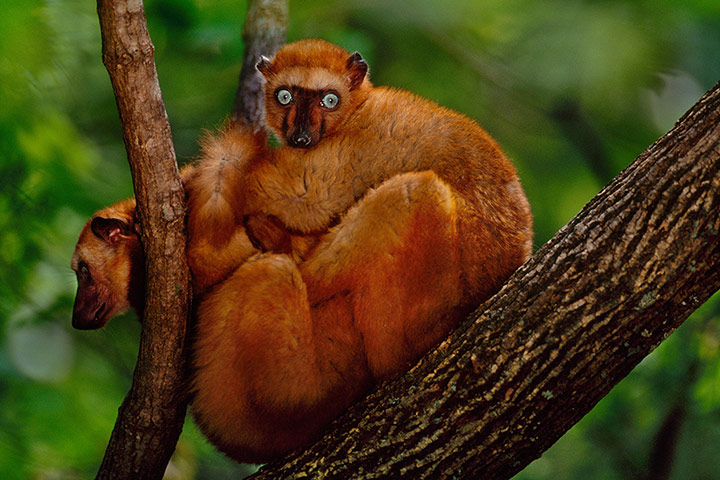
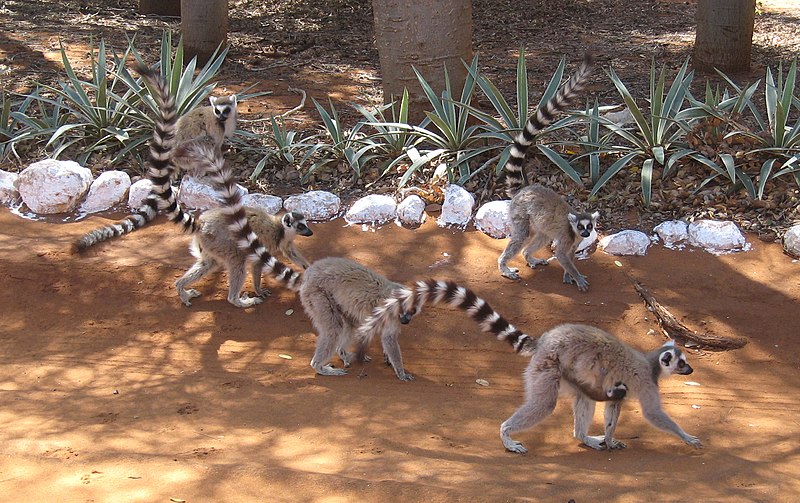

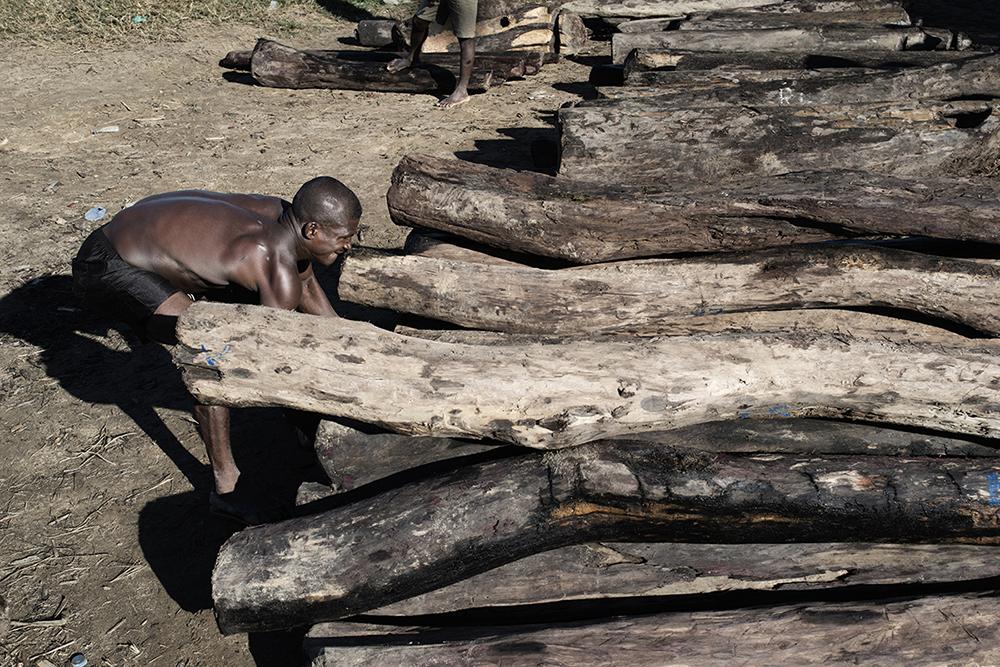
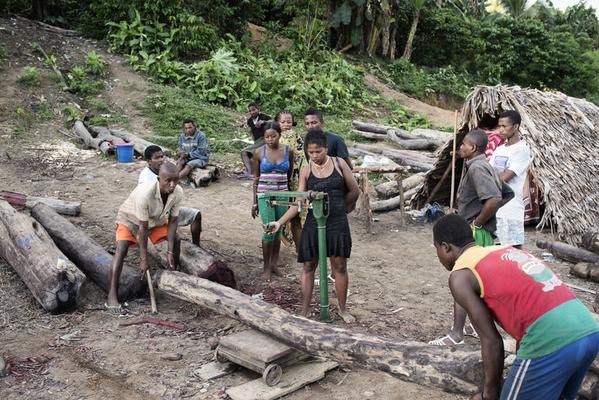
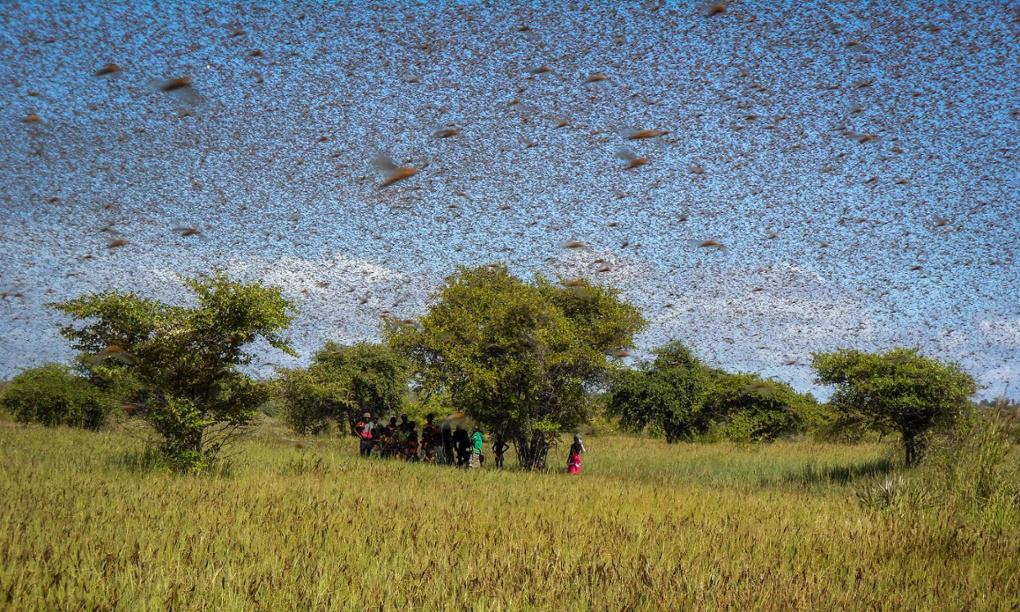
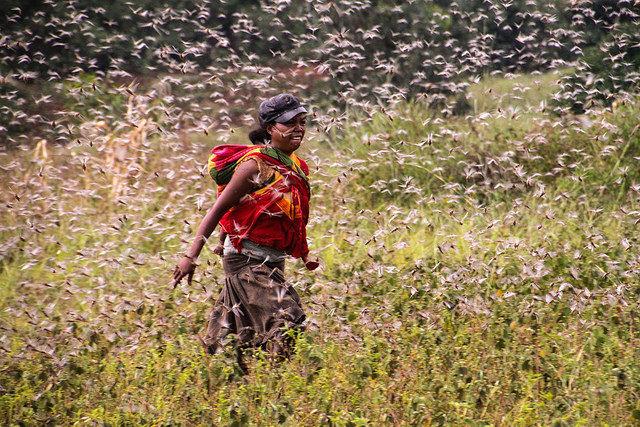
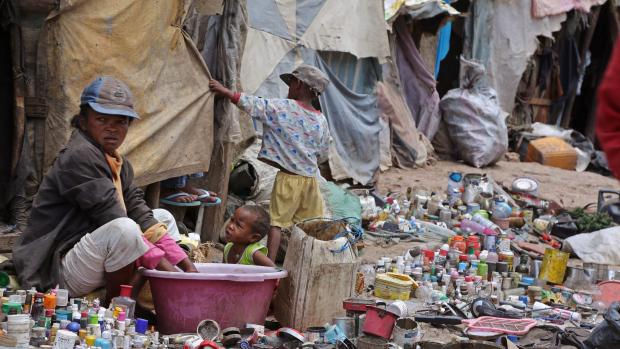
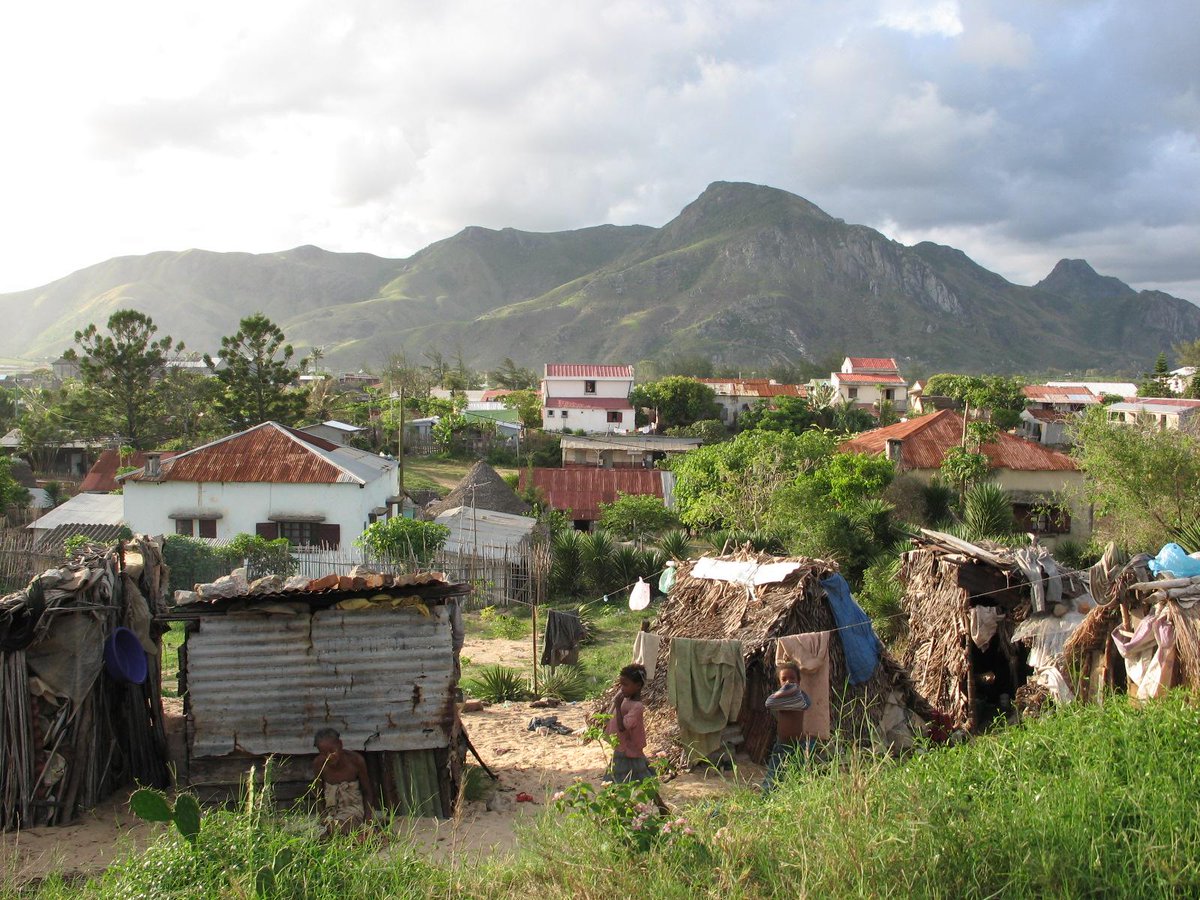
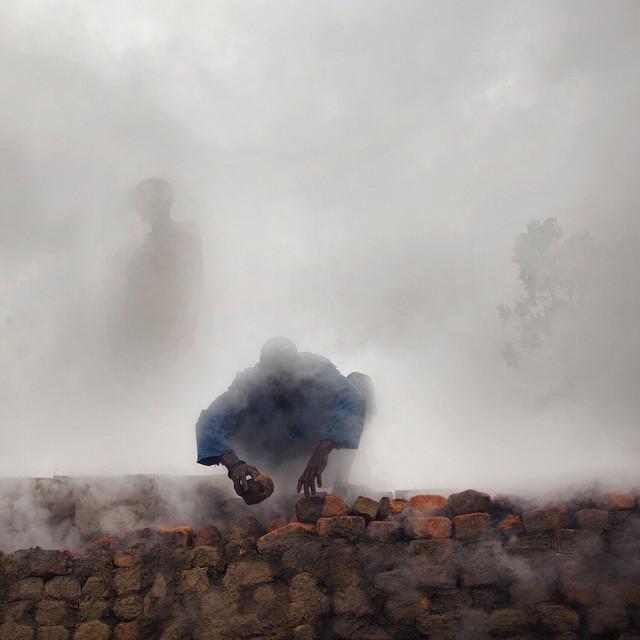

love the butterfly!
ReplyDeleteGracias, Sandra.
ReplyDeleteThat super-hermosa mariposa -- a Comet moth or Madagascar moon moth -- is a species that was until a decade or so ago teeming and abundant in the rainforests of Madagascar.
Argema mittrei
It is one of the largest moths in the world. The adult life-span is only four or five days.
The life-span of the species, alas, may not be too much longer than that, as the ancient rainforests of Madagascar are being aggressively plundered for their rosewood trees (bolabola), a variety of hardwood especially coveted by the Chinese.
Now that the Chinese elites have the wherewithal to induce the poorest peoples of Africa and Southeast Asia to decimate their forests (while simultaneously condemning to extinction the rarest species therein, from the lemur to the moon moth), we can expect the brilliant variety of life on earth, that gift of which humans have done everything possible to prove themselves unworthy, to be diminished accordingly, at a rate that would be considered alarming -- if anybody cared.
Of course, Darwin probably would have cared, and worried, or felt sad -- which is the basis of Szymborska's poetic speculation -- "he’d had enough of dying species, the triumphs of the strong over the weak, the endless struggles to survive, all doomed sooner or later. He’d earned the right to happy endings, at least in fiction with its diminutions..."
ReplyDeleteThe idea that reality, in its present state, cannot be confronted without inviting rage or madness, provides a reasonable explanation of the contemporary phenomenon of mass denial and escapism, which in turn accounts for the otherwise inexplicable popularity of ephemeral fantasy-fiction "entertainment vehicles" such as, to pick one momentary example, Game of Thrones.